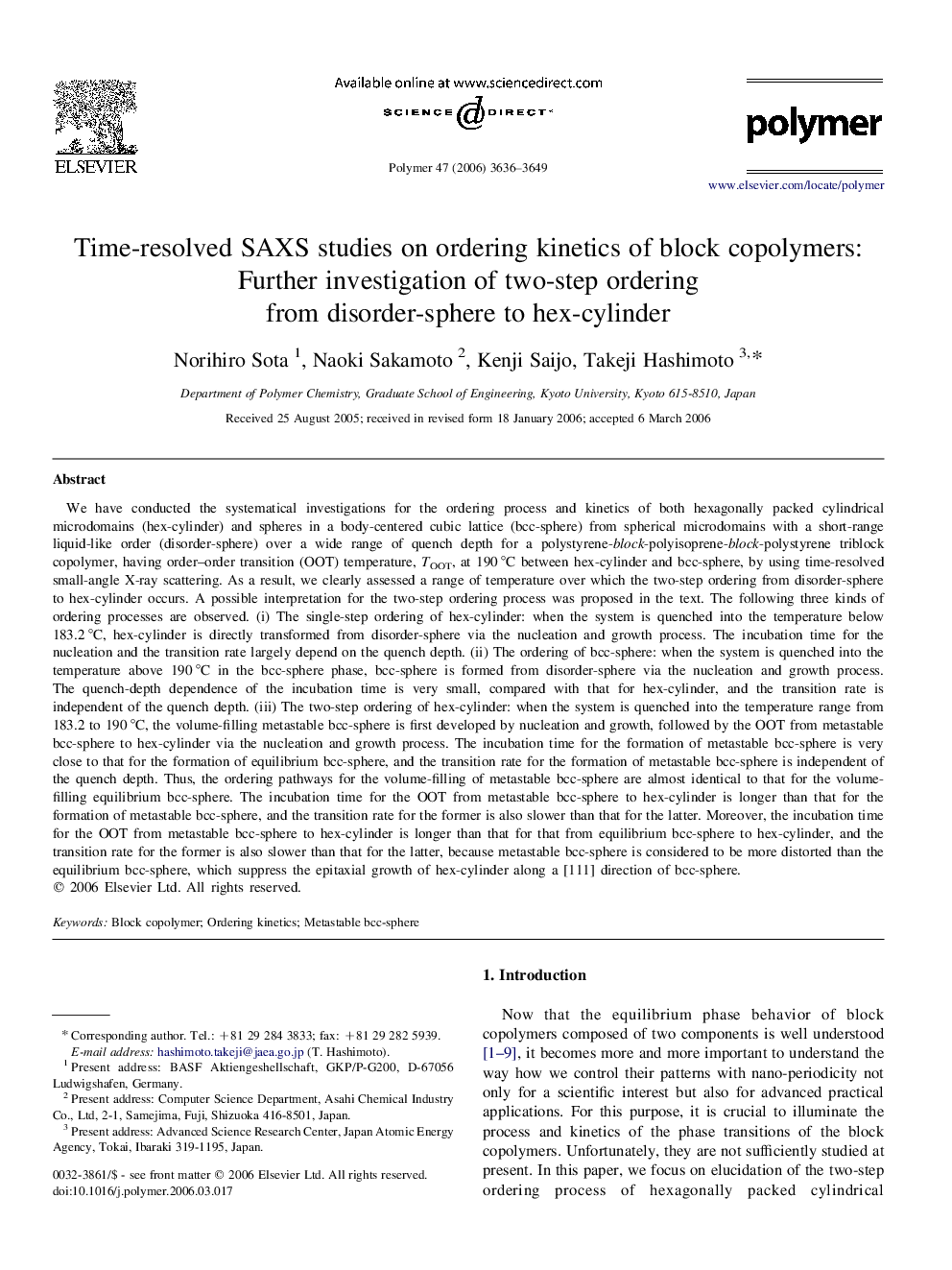| کد مقاله | کد نشریه | سال انتشار | مقاله انگلیسی | نسخه تمام متن |
|---|---|---|---|---|
| 5187135 | 1381121 | 2006 | 14 صفحه PDF | دانلود رایگان |

We have conducted the systematical investigations for the ordering process and kinetics of both hexagonally packed cylindrical microdomains (hex-cylinder) and spheres in a body-centered cubic lattice (bcc-sphere) from spherical microdomains with a short-range liquid-like order (disorder-sphere) over a wide range of quench depth for a polystyrene-block-polyisoprene-block-polystyrene triblock copolymer, having order-order transition (OOT) temperature, TOOT, at 190 °C between hex-cylinder and bcc-sphere, by using time-resolved small-angle X-ray scattering. As a result, we clearly assessed a range of temperature over which the two-step ordering from disorder-sphere to hex-cylinder occurs. A possible interpretation for the two-step ordering process was proposed in the text. The following three kinds of ordering processes are observed. (i) The single-step ordering of hex-cylinder: when the system is quenched into the temperature below 183.2 °C, hex-cylinder is directly transformed from disorder-sphere via the nucleation and growth process. The incubation time for the nucleation and the transition rate largely depend on the quench depth. (ii) The ordering of bcc-sphere: when the system is quenched into the temperature above 190 °C in the bcc-sphere phase, bcc-sphere is formed from disorder-sphere via the nucleation and growth process. The quench-depth dependence of the incubation time is very small, compared with that for hex-cylinder, and the transition rate is independent of the quench depth. (iii) The two-step ordering of hex-cylinder: when the system is quenched into the temperature range from 183.2 to 190 °C, the volume-filling metastable bcc-sphere is first developed by nucleation and growth, followed by the OOT from metastable bcc-sphere to hex-cylinder via the nucleation and growth process. The incubation time for the formation of metastable bcc-sphere is very close to that for the formation of equilibrium bcc-sphere, and the transition rate for the formation of metastable bcc-sphere is independent of the quench depth. Thus, the ordering pathways for the volume-filling of metastable bcc-sphere are almost identical to that for the volume-filling equilibrium bcc-sphere. The incubation time for the OOT from metastable bcc-sphere to hex-cylinder is longer than that for the formation of metastable bcc-sphere, and the transition rate for the former is also slower than that for the latter. Moreover, the incubation time for the OOT from metastable bcc-sphere to hex-cylinder is longer than that for that from equilibrium bcc-sphere to hex-cylinder, and the transition rate for the former is also slower than that for the latter, because metastable bcc-sphere is considered to be more distorted than the equilibrium bcc-sphere, which suppress the epitaxial growth of hex-cylinder along a [111] direction of bcc-sphere.
Journal: Polymer - Volume 47, Issue 10, 3 May 2006, Pages 3636-3649